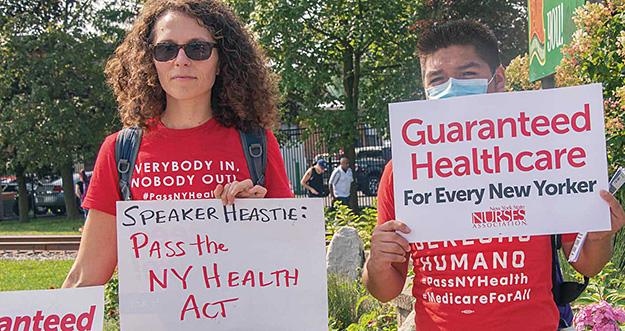America’s Egregious For-Profit Healthcare System

Every nurse understands the principles of homeostasis: In biology, homeostasis is the state of steady internal, physical and chemical conditions that living systems maintain. It is the condition of optimal functioning for the organism and includes many variables, whereby every system and function in the body is positively or negatively affected by every other system’s health and function.
But how many times have nurses thought about our healthcare system using this same model and thought process? One area nurses are taught to keep a blind eye to is a patient’s ability to pay for our care. We have all chanted, “Every patient is a VIP,” and few things make our eyes roll harder than a patient, family or — worse yet administration — admonishing us because a patient has money, better insurance or some other type of connection that makes them feel a sense of entitlement.
Inequitable System
Treating patients differently based on health insurance in a system that is fragmented and that ties access to care to employment is outdated, inequitable and ineffective. Our commercial, for-profit system leaves many underinsured or uninsured. And that reality is a failure in a part of the healthcare system that has long had devastating effects on all the other aspects and systems that struggle to bring this organism that is the American healthcare system to homeostasis. It is for that reason that every nurse needs to be a strong advocate for universal healthcare and specifically for the New York Health Act, which would guarantee all New Yorkers’ access to healthcare and leave no under- or uninsured patients!
Safe Patient Outcomes and Social Justice
One of the most egregious negative outcomes of the current for-profit system is the development of a two-tier healthcare system, where there are “rich” and “poor” hospitals and nursing homes. Of course, there are fancy names such as “safety net” hospitals for the latter. Safety net hospitals and nursing homes tend be either urban hospitals in communities of color and working-class areas or in rural settings. People with “good”— that is, private — insurance are welcome at those hospitals, but the reverse is not always the case. In today’s healthcare, instead of calling it “segregation” or “redlining,” we say, “Sorry, you are out of network.” The hospitals are described as “safety net hospitals” because they tend to have uninsured or underinsured individuals and must depend on additional state or federal dollars to keep the doors open. Because reimbursement for services is low or nonexistent, providers are taught to err on the side of cost instead of on the side of caution.
Additionally, safety net health systems have difficulty paying staff a competitive wage, or the staff receive much heavier assignments once they receive a competitive wage. As a result, the staffing ratios suffer at these facilities. As we know, more nurses equal better care.
Safe Staffing
As stated, lower reimbursement for services makes facilities struggle to offer competitive wages and benefits. Although government funds and grants offset some of the losses, that money is often a fraction of what would make up the gap. It is also very unpredictable, and somehow, inexplicably, some of the richest hospital systems find their way to some of that money.
Facilities hate unpredictable funding, and it is one of the reasons they are often reticent to give raises, especially over the course of multiple years. Another way that facilities attract workers is a competitive benefit package. Unfortunately, most benefits have a monetary value as well and come out of the same pocket that is competing with the raise in wages. A predictable, level playing field would make many of our facilities more competitive in recruiting and retention. In addition, when we talk benefits, the most expensive one is the healthcare the employer provides to staff, which makes up about 30 percent to 40 percent of payroll costs. Our current system is very unpredictable and is at the whim of for-profit insurers; if they want to raise rates or cut coverage they can. NYSNA has 80-plus contracts being negotiated this year. Nurses should pay attention to how much energy and resources go into preserving and defending healthcare.